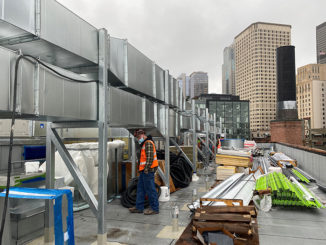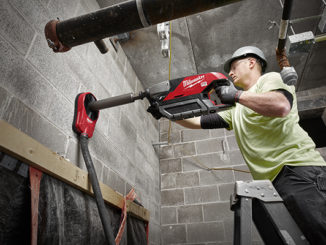
The construction industry is booming in BC, and there are no signs of it slowing anytime soon. In the fall, there were $115 billion worth of projects on the go across the province and $206 billion worth of proposed work, according to the BC Construction Association (BCCA).
The $40 billion LNG Canada project in Kitimat leads the way, but other major infrastructure projects include the ongoing construction of the Site C Dam, the twinning of the Trans Mountain Pipeline, the Patullo Bridge replacement, the extension of the subway line in Vancouver’s Broadway corridor, and the expansion of the Vancouver International Airport.
Market consultant BTY is expecting slower growth in housing starts across the province, but Vancouver is seeing big investments in retail buildings and office towers right now, and multiple properties are under construction in the city that are set for completion over the next couple of years. Victoria and Nanaimo are experiencing sustained building booms, too, and had record numbers of building permits issued early in 2019.
All of which means that labour supply continues to be top of mind for the entire industry. The BCCA’s 2019 Construction Industry Survey showed that skilled workforce shortage was a concern for 68% of respondents, far outstripping the Community Benefits Agreement (20%), permits and red tape (17%), productivity and management (10%), and quality of public procurement (6.3%). And while there were 236,000 employees in province’s construction sector at the end of 2019—an increase of 17% over the past five years—the industry will need to continue adding more skilled tradespeople to keep up with demand, says BCCA president Chris Atchison.
This isn’t to say the industry isn’t making strides on the workforce front, however, he adds, particularly in its targeting of underrepresented groups. “We want to create and ensure that workplaces are safe and productive for everybody and to break down some of those barriers that might have precluded some demographics from either seeking out the wonderful opportunities in construction or preventing them from staying.”
As two examples of the industry making headway on this front, Atchison points to the Skilled Trades Employment program, which has placed more than 12,000 people in construction jobs over the past 12 years, and the Builders Code, an initiative started last year that sets a standard code of conduct for workers on construction sites in BC. So far, over 125 employers have signed on to the Builders Code and more than 20 training programs have been done throughout the province.
On the regulatory side, the BCCA says it’s keeping its on eye on proposed changes to the Builders Lien Act, which may include prompt payment stipulations, as well as changes to the energy code, which will increase capital costs to ICI contractors.
Atchison is also hoping that 2020 will foster more relationships between the tech and construction sectors in the province. “We want to make sure that the advances in technology aren’t being made without consideration of the opportunities that exist in construction,” he says. “I think we’re largely an untapped market for advances in technology, and so by encouraging this partnership we can not only wake up a potential industry to assist us, but also a willing collaborator in terms of innovation.” ■



